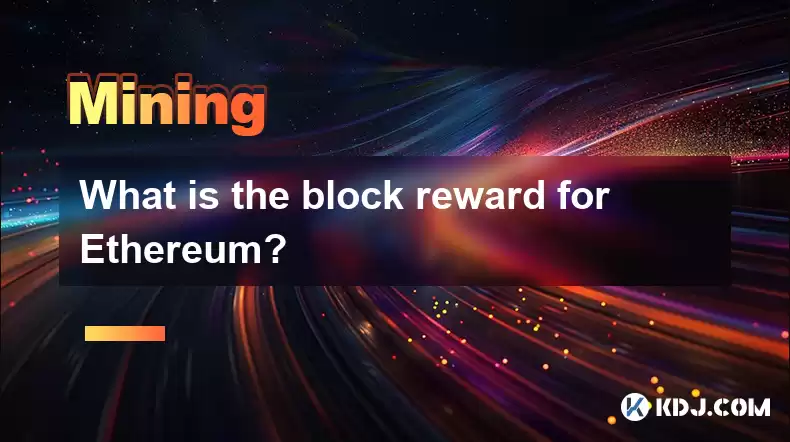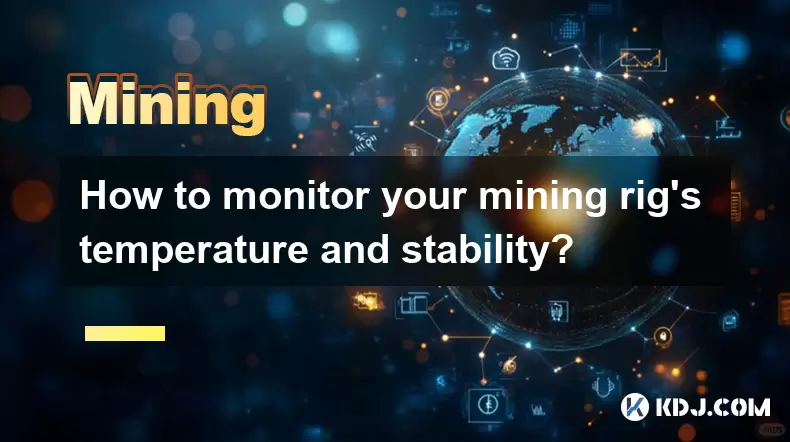-
 Bitcoin
Bitcoin $116800
0.20% -
 Ethereum
Ethereum $4192
5.51% -
 XRP
XRP $3.287
0.12% -
 Tether USDt
Tether USDt $1.000
0.00% -
 BNB
BNB $808.7
2.39% -
 Solana
Solana $180.4
2.23% -
 USDC
USDC $0.9999
0.01% -
 Dogecoin
Dogecoin $0.2390
6.80% -
 TRON
TRON $0.3365
-0.71% -
 Cardano
Cardano $0.8081
2.20% -
 Hyperliquid
Hyperliquid $43.74
6.50% -
 Chainlink
Chainlink $21.27
9.03% -
 Stellar
Stellar $0.4530
0.07% -
 Sui
Sui $3.908
3.00% -
 Bitcoin Cash
Bitcoin Cash $575.0
-1.02% -
 Hedera
Hedera $0.2632
0.61% -
 Avalanche
Avalanche $24.17
3.25% -
 Ethena USDe
Ethena USDe $1.001
0.02% -
 Litecoin
Litecoin $122.1
-0.24% -
 Toncoin
Toncoin $3.376
0.35% -
 UNUS SED LEO
UNUS SED LEO $8.981
-0.15% -
 Shiba Inu
Shiba Inu $0.00001373
5.86% -
 Uniswap
Uniswap $10.85
2.17% -
 Polkadot
Polkadot $4.080
4.03% -
 Dai
Dai $1.000
-0.02% -
 Pepe
Pepe $0.00001228
8.92% -
 Bitget Token
Bitget Token $4.506
0.09% -
 Cronos
Cronos $0.1581
3.76% -
 Monero
Monero $270.1
0.81% -
 Ethena
Ethena $0.7293
15.86%
What is the block reward for Ethereum?
Emerging from the depths of blockchain technology, the Ethereum block reward system aligns with the critical role of miners, rewarding them for their efforts in securing the network's integrity and processing vital transactions.
Feb 19, 2025 at 06:30 pm

Key Points:
- Definition and significance of block reward
- Ethereum's block reward mechanism
- Calculation of Ethereum's block reward
- Historical evolution of Ethereum's block reward
- Factors influencing Ethereum's block reward
What is a Block Reward?
In the world of cryptocurrency mining, the block reward refers to the incentive awarded to miners for successfully adding new blocks to the blockchain. This reward incentivizes miners to dedicate computational resources to process and validate transactions, ensuring the security and integrity of the distributed ledger system.
Ethereum's Block Reward Mechanism
Ethereum's block reward mechanism is designed to provide miners with an economic incentive while maintaining the network's stability and security. The block reward currently comprises two components:
- Base Reward: A fixed amount awarded for the successful mining of each block. This reward is initially set at 2 ETH per block.
- Transaction Fees: Additional rewards earned by miners for including transactions in the blocks they mine. These fees vary based on network congestion and transaction demand.
Calculation of Ethereum's Block Reward
The total block reward for Ethereum can be calculated as follows:
Total Block Reward = Base Reward + Transaction Fees
For example, if the base reward is 2 ETH and the transaction fees in a block amount to 0.5 ETH, the total block reward for that specific block would be 2.5 ETH.
Historical Evolution of Ethereum's Block Reward
Ethereum's block reward has undergone several adjustments since its inception:
- 2015 Genesis Block: The block reward was initially set at 5 ETH when Ethereum was launched in 2015.
- 2017 Ethereum Improvement Proposal (EIP) 1559: Introduced a mechanism to burn part of the transaction fees, reducing the overall block reward.
- 2021 EIP-1559 Update: Further refined the fee-burning mechanism, resulting in a more stable block reward.
Factors Influencing Ethereum's Block Reward
Several factors can influence Ethereum's block reward:
- Network Hash Rate: The total computational power dedicated to mining Ethereum affects the difficulty of block mining, which in turn impacts the block reward.
- Transaction Volume: High demand for transactions on the Ethereum network leads to increased transaction fees, potentially boosting the block reward.
- Cryptocurrency Market Conditions: The overall crypto market performance can influence the value of ETH, which affects the profitability of mining and thus the block reward.
FAQs:
1. What is the purpose of a block reward?
A block reward provides economic incentives to miners, encouraging them to participate in the blockchain network and ensure its security.
2. How is Ethereum's block reward calculated?
Ethereum's block reward is calculated by adding the current base reward to the transaction fees included in each mined block.
3. Why has Ethereum's block reward changed over time?
Over time, adjustments have been made to Ethereum's block reward mechanism to optimize network stability and security while adapting to changing market conditions.
Disclaimer:info@kdj.com
The information provided is not trading advice. kdj.com does not assume any responsibility for any investments made based on the information provided in this article. Cryptocurrencies are highly volatile and it is highly recommended that you invest with caution after thorough research!
If you believe that the content used on this website infringes your copyright, please contact us immediately (info@kdj.com) and we will delete it promptly.
- Crypto Airdrops & Opportunities: What's Hot in August 2025
- 2025-08-09 22:30:12
- XRP, Cardano, and the Alluring Alternatives: A 2025 Crypto Landscape
- 2025-08-09 22:35:12
- Shiba Inu (SHIB) in the Crypto Landscape: Community, Trends, and Future Outlook
- 2025-08-09 20:30:12
- Solana, Unilabs, and Social Trends: Decoding the Crypto Buzz
- 2025-08-09 21:10:12
- Dogecoin, Meme Coins, and Layer Brett: Chasing the Next 100x
- 2025-08-09 20:50:12
- Crypto Presales in 2025: Are They Set to Outperform Launches?
- 2025-08-09 20:55:15
Related knowledge

What is "proof-of-work" and how does it relate to mining?
Aug 07,2025 at 02:03pm
Understanding the Concept of Proof-of-WorkProof-of-work (PoW) is a consensus mechanism used in blockchain networks to validate transactions and secure...

What are the differences between mining on Windows vs. Linux?
Aug 06,2025 at 11:29pm
Overview of Cryptocurrency Mining PlatformsCryptocurrency mining involves using computational power to solve complex cryptographic puzzles and validat...

How to use an old computer for cryptocurrency mining?
Aug 07,2025 at 12:42pm
Understanding the Feasibility of Using an Old Computer for MiningUsing an old computer for cryptocurrency mining may seem outdated, but it is still te...

Can you mine cryptocurrency using solar power?
Aug 07,2025 at 12:00am
Understanding the Basics of Cryptocurrency MiningCryptocurrency mining involves validating transactions on a blockchain network by solving complex cry...

How to monitor your mining rig's temperature and stability?
Aug 09,2025 at 09:43am
Understanding the Importance of Temperature Monitoring in Mining RigsMaintaining optimal temperature levels in a mining rig is essential for long-term...

How to build a mining rig inside a PC case?
Aug 06,2025 at 11:01pm
Understanding the Basics of a Mining Rig in a PC CaseBuilding a mining rig inside a PC case involves transforming a standard computer chassis into a d...

What is "proof-of-work" and how does it relate to mining?
Aug 07,2025 at 02:03pm
Understanding the Concept of Proof-of-WorkProof-of-work (PoW) is a consensus mechanism used in blockchain networks to validate transactions and secure...

What are the differences between mining on Windows vs. Linux?
Aug 06,2025 at 11:29pm
Overview of Cryptocurrency Mining PlatformsCryptocurrency mining involves using computational power to solve complex cryptographic puzzles and validat...

How to use an old computer for cryptocurrency mining?
Aug 07,2025 at 12:42pm
Understanding the Feasibility of Using an Old Computer for MiningUsing an old computer for cryptocurrency mining may seem outdated, but it is still te...

Can you mine cryptocurrency using solar power?
Aug 07,2025 at 12:00am
Understanding the Basics of Cryptocurrency MiningCryptocurrency mining involves validating transactions on a blockchain network by solving complex cry...

How to monitor your mining rig's temperature and stability?
Aug 09,2025 at 09:43am
Understanding the Importance of Temperature Monitoring in Mining RigsMaintaining optimal temperature levels in a mining rig is essential for long-term...

How to build a mining rig inside a PC case?
Aug 06,2025 at 11:01pm
Understanding the Basics of a Mining Rig in a PC CaseBuilding a mining rig inside a PC case involves transforming a standard computer chassis into a d...
See all articles

























































































